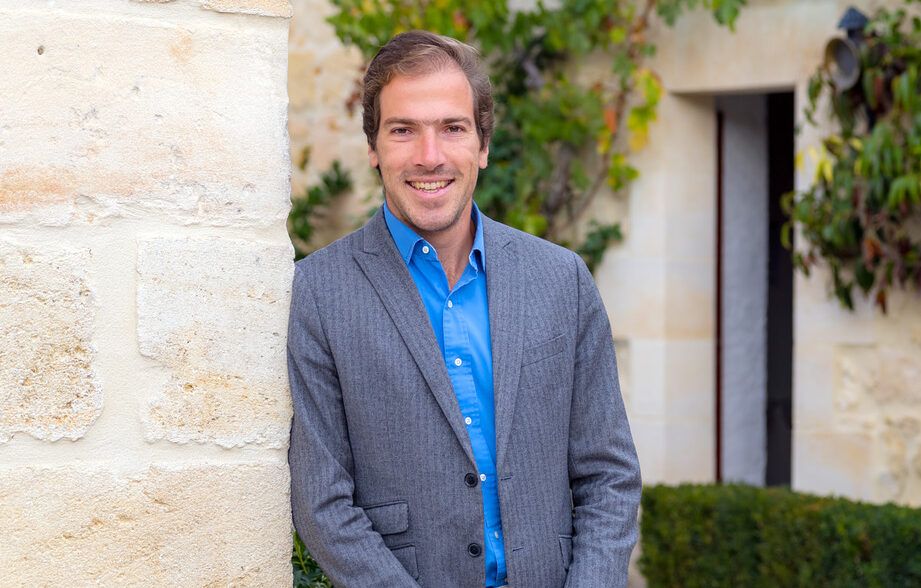“In short, organic is generally speaking better, but there is so much more to sustainability than this micro subject making a lot of noise,” Barton says
Mélanie Barton-Sartorius and Damien Barton-Sartorius are the 10th generation in the Barton wine dynasty that began in 1725, when Thomas Barton, a native of Ireland, landed on the quays of Bordeaux. They are the children of Lilian Barton-Sartorius and her husband, Michel Sartorius, and the grandchildren of Anthony Barton. The legacy is impressive: the acquisition of Château Langoa Barton in St.-Julien in 1821, followed by the purchase of a quarter of the Léoville domaine in 1826, giving birth to Château Léoville Barton nearby. The most recent project was the acquisition of Château Mauvesin in 2011 which has been renamed Mauvesin Barton.
The Bartons are only one of three Bordeaux families to own their estates continuously since the 1855 Classification.
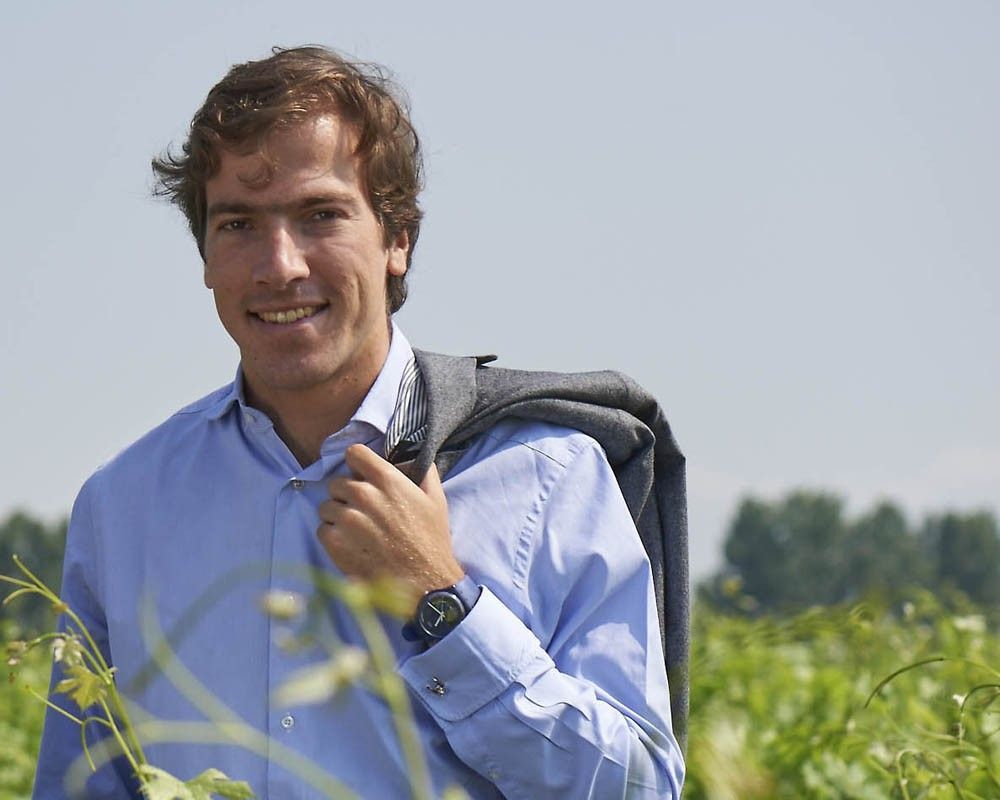
Could you explain what the Zero Waste wine range is?
Zero Waste is a big word! but it conveys very well what this is about: It’s about taking more responsibility for our impact on the environment, with a particular focus on waste reduction and the circular economy. ‘Just recycling’ doesn’t go far enough.
How did this come about?
I had a fortunate encounter with Natacha Jaume from Borough Wines at the Future of Wine Forum November 2019 organised by sustainablewine.co.uk. It was really encouraging to attend a conference where sustainability in wine had a proper, broad vision. Sustainability is too often limited to being organic or not. What about transport, water use and treatment, human respect, wildlife, our carbon footprint, relationships with local partners, health?
I was very impressed with Borough Wines’ approach: the way they embraced the circular economy – wine on tap is a very clever way to reduce carbon footprint and there are many instances, in restaurants for example, where wine on tap is perfect. However, to me, the bottle needed to be part of the solution. So, I thought, there must be a way to reduce the environmental impact of the glass bottle without damaging the image of a good bottle of wine or a brand. Reusing a bottle is a more environmentally-friendly alternative that can reduce the carbon footprint by 95%, and it can be reused up to 30 times!
I asked Borough Wines if they would be interested in launching a return bottle scheme with an incentivising deposit attached to it with my wines from Bordeaux. At first they were sceptical but eventually they came to the conclusion that they could give the return bottle a 21st century twist, but that for it to work we needed to launch a bigger range.
Now, nearly a year later, it is really exciting to see this develop from one conversation at a conference to the launch of a range of 25 wines in a Return Bottle.
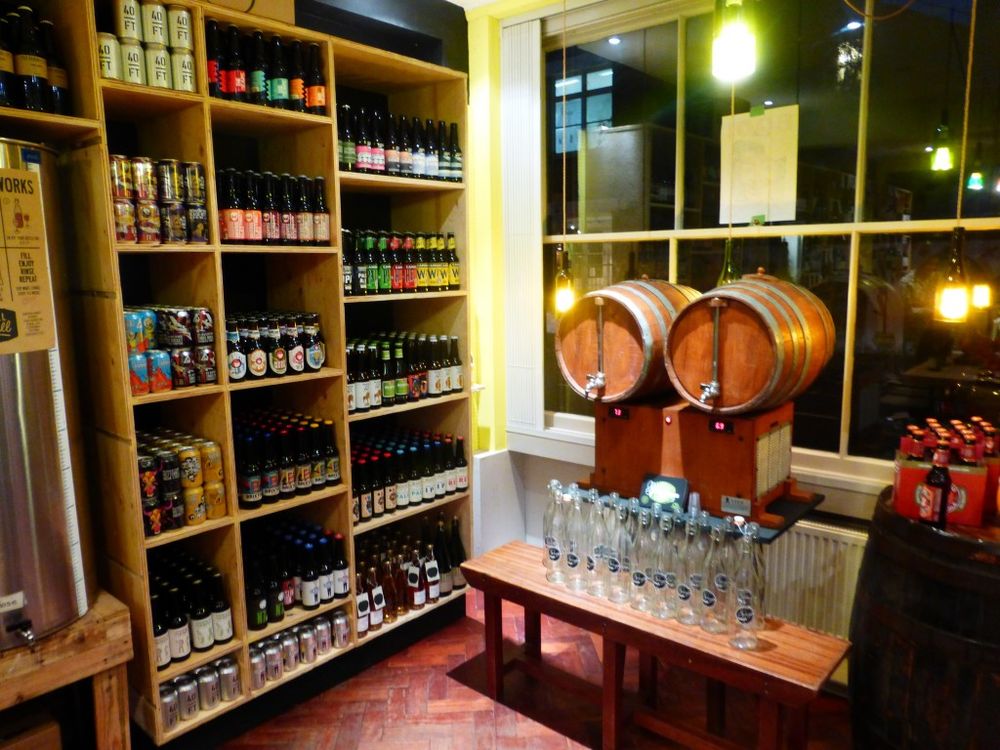
The refill bottle scheme in action
Could you explain what your involvement is with the project?
My involvement is through the brand 225, which I set up with my business partner Benjamin Joyeux. A nod to the past, 225 refers to the time, not so long ago, when wines of Bordeaux were transported in 225 litre barrels and then bottled by merchants in the UK.
We select all our wines from very good Bordeaux AOCs up to Grand Cru Classé level, all sourced from growers who share our vision for terroir-driven wines with a focus on sustainability.
We are very pleased to have enlisted the second wine of Mauvesin Barton, L’Impression de Mauvesin in the project.
What are your feelings about sustainability within the global wine industry?
Sustainability means meeting our own needs without compromising the ability of future generations to meet their own needs. In addition to natural resources, we also need social and economic resources.
Sustainability in wine is too often limited to say: are you organic or are you not? This question is not even half the tip of an iceberg… I must say that I still don’t understand what people look for when they ask this question. Is it for health reasons or is it for environmental reasons?
Let’s remember that organic viticulture does spray stuff on its vines. It is not free of spraying. The only condition is that it needs to be from natural origin. Natural does not necessarily mean safe. Copper spraying does have an impact on soil, plants and water when used in excessive amounts. Moderate use of synthetic spraying can be better than bad organic farming.
But this is not the only way you decide to prevent or cure diseases. Let’s say you do work enough in the vineyard to limit disease pressure, then spraying is almost not a consideration anymore! But all the work that can be done to prevent spraying in the first place is not visible on a label, there is no certification for this hard work.
In short, organic is generally speaking better, but there is so much more to sustainability than this micro subject making a lot of noise.
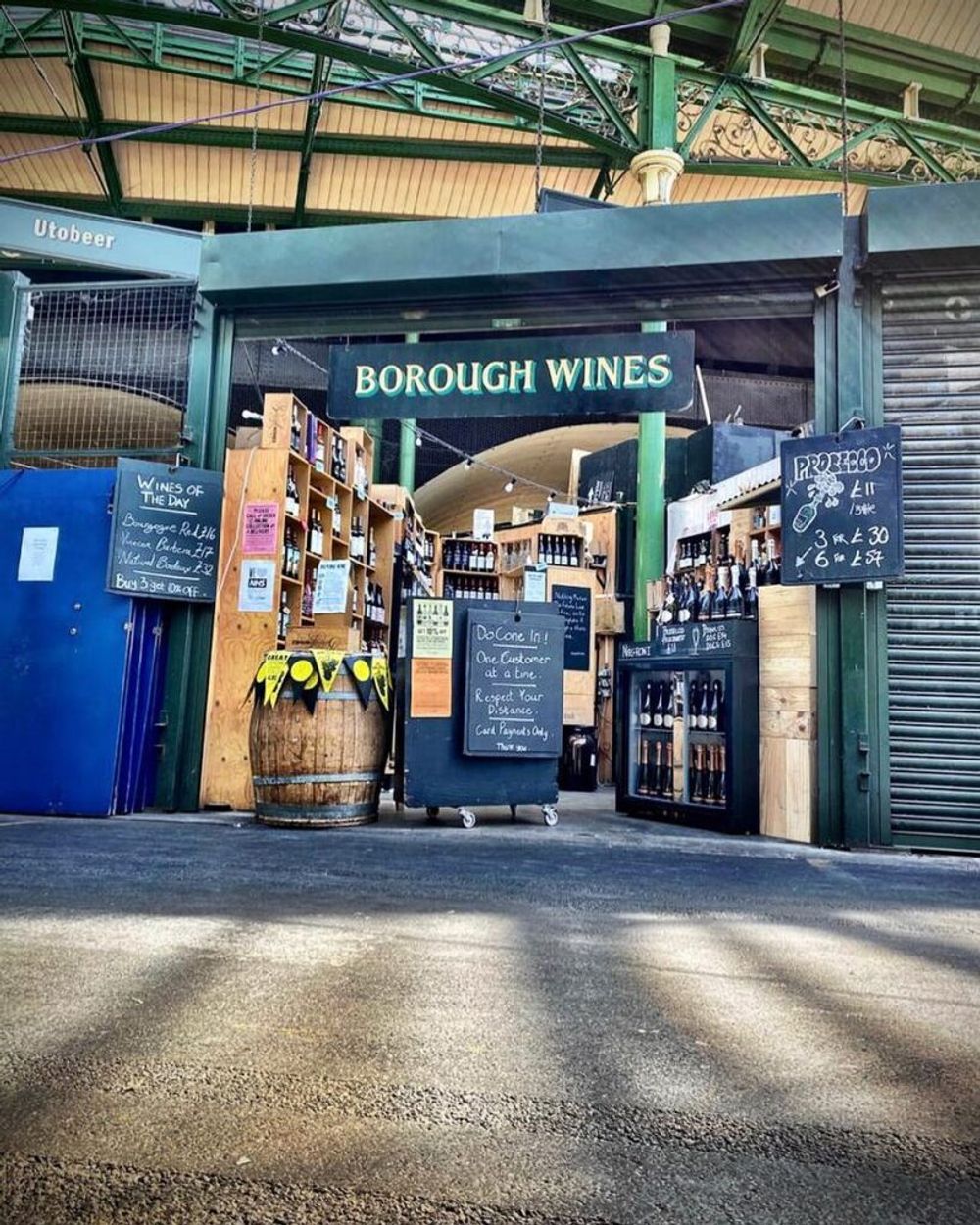
Borough Market is where Borough Wines’ journey began.
There are so many other subjects that I would like to read more about when it comes to sustainability in wine:
- Where does the grape come from and how much are the producers paid?
- How is wildlife and biodiversity managed in the vineyard?
- What is done to prevent or limit spraying?
- Where are major suppliers located?
- How is the vineyard workforce treated and are they paid fairly?
- What about forest management?
- What about water management?
- Are you considering how to minimise the environmental impact of new construction works: warehouses, wineries?
- Are you using a green electricity supply and how are you managing your consumption of it?
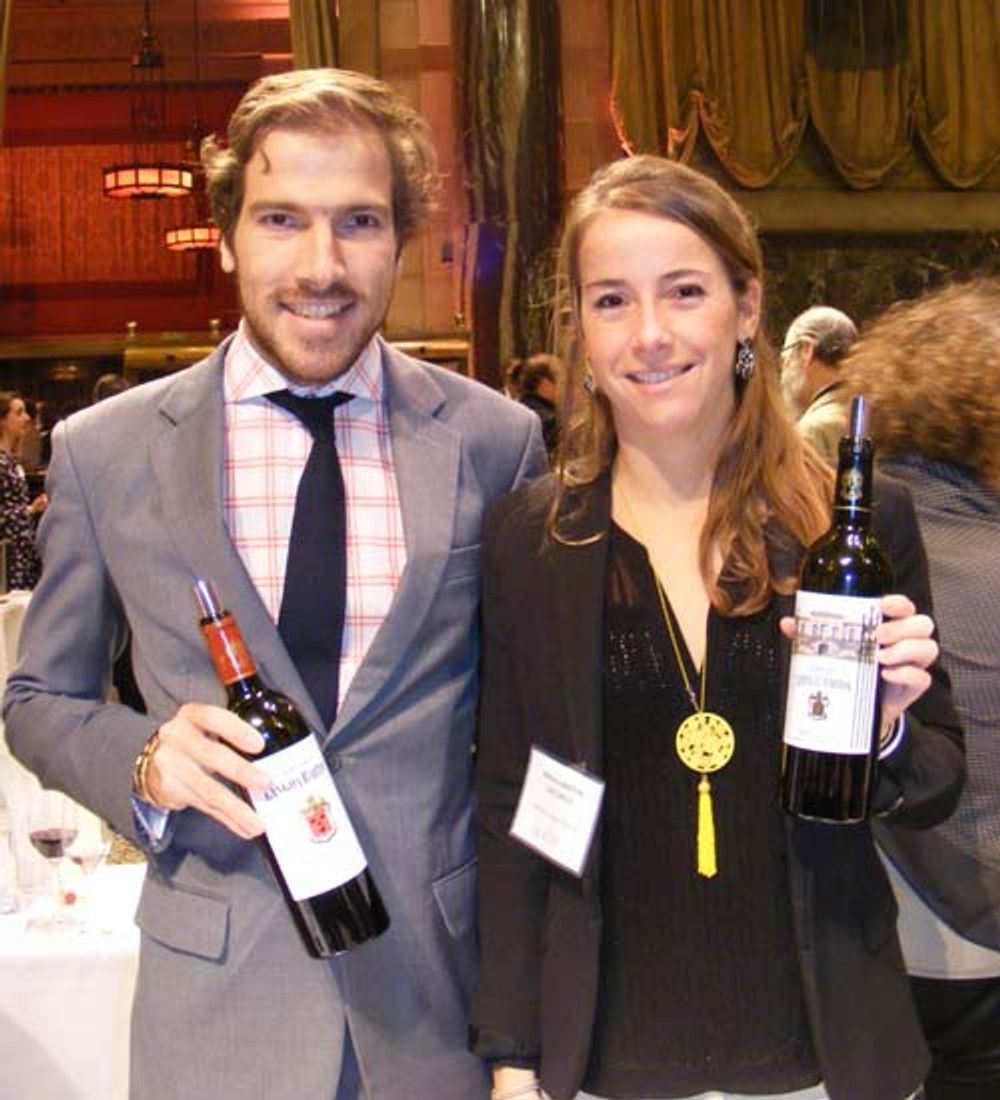
Melanie and Damien Barton-Sartorius. Leoville Barton 2016 has been named wine of the year by Wine Spectator – 15 years after a Bordeaux wine last won that accolade
So do you think that enough is being done to make wine more sustainable?
I guess we could all do better. At least it is a consideration which is getting stronger amongst producers, merchants and consumers and there are no actions which are too small to make a difference. One will lead to another and peer pressure will push others to act.
Which are the main battles to be won?
Consumers want efforts from the wine industry to protect their health and the environment but don’t really understand how the whole cycle actually works. We need to explain as farmers to consumers how it works so they can understand what is actually done. Spraying is easy to understand, this is why the subject is so strong. We need to work on the rest
Where have there been successes do you think?
Public awareness is a success. Consumers are driving change!
But also certifications such as the Haute Valeur Environnementale (HVE) which is the first certification to take a large number of subjects in consideration. The movement Slow Wine in Italy is also an interesting one.
And where are the main failures?
There is a real break of communication between farmers and consumers. Trust has been lost reciprocally.
Apart from this project you seem to have a number of plates spinning – what’s the status of Initio? (any other projects we need to be aware of?)
Ah! Yes indeed, I like staying active!
Initio was my first project outside the family business with my friend and partner Benjamin Joyeux. We wanted to blend terroir and cool wine. Too many wines that looked fun were totally uninteresting. So we wanted to have a refreshing look but with wines in small batches coming from grape growers we know well and from terroir we have identified. Initio is a growers wine living in the 21st century.
I have also taken over the direction of Château Langoa Barton in Saint Julien. It makes me very proud to walk in my ancestors’ steps. We will mark our 200th anniversary soon!
What is your role at Léoville, Langoa and Mauvesin?
In Saint Julien, I am a bit of a Swiss army knife. Vines and wine of course, but a farm has so many other things going on! For example, I am working on setting up a new cuverie (winery). I also spend a lot of time traveling to promote the wines we make. Well, I did when COVID allowed me to do so!
How sustainable is the family business at these estates?
I am glad to take over after 200 years and 8 generations of Barton legacy. I work every day thinking about the next 8 generations to come and how I can make the best wines for today and for the next 200 years.
It’s an ongoing process. But there is a lot we do! We’ve put a lot of thought into how we can reduce our environmental impact within the new winery, as much as in the vineyard. One of our most recent decisions was to change our glass supplier. They are located closer to us and our bottle is now lighter, reducing our carbon emissions from transporting bottles.
I like to drive people around the vineyard to show exactly what we’re doing. Come visit us!
How long before those projects start using a sustainable bottle?
Mauvesin Barton in Moulis is already part of the project! Its second wine, L’Impression de Mauvesin Barton will be available in a reusable and sustainable bottle.
